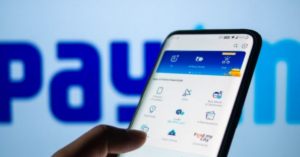The patient experience is a crucial element of providing health care whether they come in for a routine check-up or have a consultation regarding their health. As society evolves, the way people pay evolves as well, and failing to keep up with changing trends means that some health care offices and institutions could get left behind and impact the office and the patient.
So, what can waiting rooms and hospitals do to improve the patient experience and encourage them to enjoy their stay, whether a short appointment or long-term residency? If you want to improve your medical office’s approach to patient payments, consider these improvements.
Better Security
Payment security is always a hot topic. If it isn’t locking up the cash register at the end of the day, it’s worrying how secure card payments are. This is something that all physician offices should consider, especially as payment breaches have occurred a lot over the past five or ten years.
It’s worth looking at your current payment systems and debating whether improvements are required. As systems get older they also become less secure, so it may be worth upgrading payment systems before you experience an attempted breach. You could also look at solutions that include an ACH vs wire transfer and establish which is more secure and will benefit your patients.
Diverse Payment Options
Another idea that offices could embrace is diverse payment options. This is something that has appeared in many businesses across the country, with retail stores allowing Bitcoin or Ethereum payments in favor of traditional payment options.
With many physicians already investing in cryptocurrency to diversify their portfolios, it could be beneficial to offer the same versatility to patients. If they can already pay by cash or card, another currency option may not hurt, and it could bring further benefits to your office, including lower transaction costs and more rapid transfers.
Increased Telehealth
The past few years have also seen increasing telehealth as a necessity. While many doctor’s offices and hospitals have returned to normal, you can still find patients who prefer telehealth or use telehealth solutions because they cannot physically get to in-person appointments.
This can pose a problem when it comes to payment as they cannot pay through the screen, and this may mean you need to chase up patients, which is not always as convenient as it should be. A dedicated payment portal for telehealth patients can avoid this as it is no different from paying for goods and services online. The portal must be secure to prevent hacks, so make sure you research effective and safe payment portal platforms.
Reduced Germ Transmission
In terms of the office, contactless payments can make a significant difference in reducing germ transmission. As patients no longer need to tap in their pin code or swipe their card, many offices are seeing a dramatic reduction in second-hand illnesses due to germs and bacteria spread via card machines or handling cash.
Of course, there is always the risk of germs lingering. When your patients pay for their treatment or prescription, offer them some hand sanitizer to further reduce the risk of illness spreading.
Receipts
Receipts are crucial for patients as they need to send over copies to their insurance company. Yet, the traditional receipt is not as convenient as it could be. A small piece of paper is too easy to use and means the patient could lose it if they are not careful.
Physicians’ offices can offer multiple receipt options including via text or email. This means the receipt is sent directly to the patient to share with the relevant insurance company following treatment. For patients who prefer traditional receipts, you can still provide a paper one.
Flexibility
Payment flexibility is also an excellent way to improve the patient payment experience. Itemizing treatment and splitting it into manageable chunks will meet the patient’s financial needs and significantly reduce the cost anxiety from receiving a considerable medical bill.
After treating a patient, take some time to go over their financial situation and work out the best payment plan for them to follow. They will be thankful that you have taken the time to explain things, which improves their overall experience, too.
No More Money Headaches
The last thing a patient needs is another headache when paying for their treatment. If you want to boost their experience and make their stay worth it, these payment ideas could significantly improve the experience and make your office more efficient, successful, and appealing to patients and fellow physicians alike.










